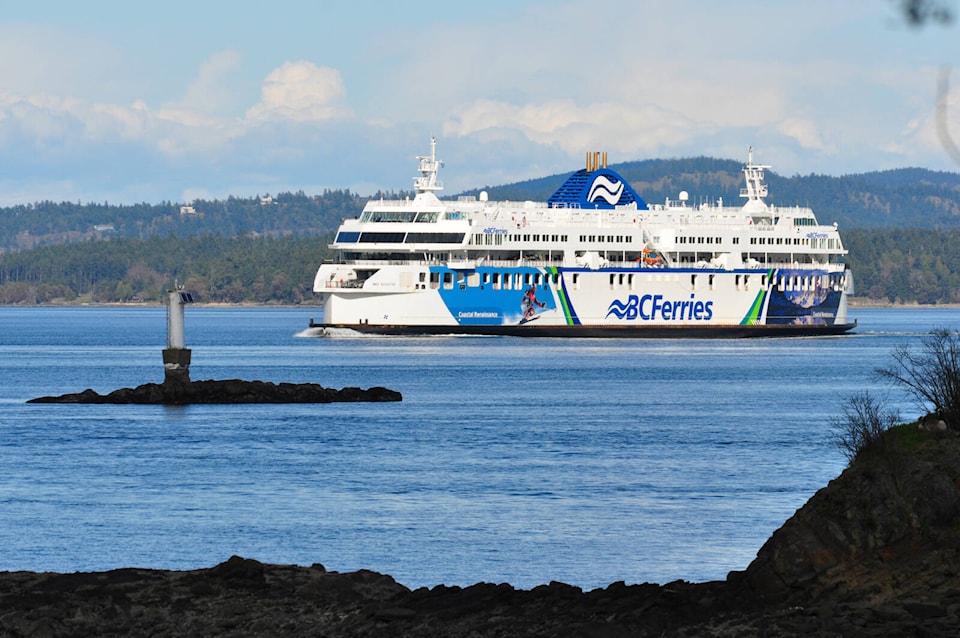The BC Green’s Adam Olsen says that while the provincial ferry system may be “very, very fragile,” he does not foresee that a recent decision to not reinstate a Washington State inter-country ferry is cause for concern on the future of smaller BC Ferries routes.
Washington State Ferries announced recently that it won’t resume the Sidney-Anacortes route for at least seven years.
Olsen’s riding of Saanich North and Islands is located at the tip of the Saanich Peninsula and home to the Swartz Bay ferry terminal, which connects the Island to the Lower Mainland, as well as the Southern Gulf Islands and Town of Sidney.
But Olsen argues that unlike the Washington State route, many of these smaller routes remain essential.
“The Anacortes to Sidney route wasn’t a year-round service,” he added. “It was basically there to accommodate tourism. Very few routes in British Columbia’s ferry system are driven by tourism.”
But these important routes connecting different provincial islands have not been saved from the industry-wide plague of staffing challenges in recent months.
“It’s a matter of one or two staff members not being able to come into work and there being basically havoc and chaos in terms of people being able to get from and to their homes and work and communities.”
Recent years have seen BC Ferries make additional investments in its vessel fleet, last November opening its bidding process for four new Island Class vessels, smaller diesel-electric hybrid ships which can fully convert into battery-electric ships.
The vessels will serve smaller routes, including the route between Crofton and Saltspring Island – part of a 12-year capital plan responding to what BC Ferries called “anticipated passenger and vehicle growth and changing customer needs.”
The plan includes building seven new major vessels to replace six existing ships. BC Ferries also plans to increase the sailing frequency between Metro Vancouver and Nanaimo while adding more sailings or using larger vessels to serve communities outside the major routes connecting the Lower Mainland and Vancouver Island with additional sailing already in place.
Olsen also sees growth opportunities in passenger-only services.
“We move chunks of the highway around,” he said. “Why are we not moving people around? Why are we not connecting people to the centres?”
These optimistic developments and future growth opportunities co-exist with immediate and more systemic challenges as described in a revised submission to the British Columbia Ferry Commission, the independent regulator overseeing BC Ferries.
The report warns of rising costs, declining revenues and labour shortages as BC Ferries sails into a “mild recession.”
Olsen hopes that the province’s decision to spend $500 million on limiting fare increases will make a difference. He also expressed concerns about labour shortages, while acknowledging efforts to address them through additional training and changes in the status of casual workers.
“That’s really critical to making sure that ferry service is stable going forward,” he said.
Olsen also called on the provincial government to re-think the governance of BC Ferries. While it operates as a private company, its single share-holder is the provincial government.
RELATED: BC Ferries hiring binge aims to fill 500 positions to stem wave of sailing cancellations
RELATED: B.C. investing $500M to electrify BC Ferries fleet, keep fares steady
“They have been kind of tinkering around the edges of the governance problem that the BC Liberals created and we will see if the B.C. NDP have the fortitude, the courage to actually make the changes to the governance side of it rather than just trying to achieve different outcomes without changing it,” he said.
One possible solution could see BC Ferries return to direct government control in the same way that Washington State operates.
But that doesn’t curb systemic labour shortage challenges, Olsen said, noting direct government oversight “is not a panacea.”
Olsen’s hopeful in the appointment of Nicolas Jimenez as CEO of BC Ferries. As the former head of ICBC, Jimenez knows the political waters of Victoria, Olsen said.
BC Ferries recently launched its biggest recruitment campaign in the company’s history, running until mid-April.
“We are recruiting to fill more than 500 casual positions for shoulder and peak season 2023,” spokesperson Deborah Marshall said.
Marshall said the current shortage of mariners is worldwide with fewer young people entering the marine sector.
“British Columbia has one of the highest employment rates in Canada, making the job market very competitive. We are continuing to review ways of ensuring our job postings are attractive to both new and existing employees.”
@wolfgangdepner
wolfgang.depner@blackpress.ca
Like us on Facebook and follow us on Twitter.
